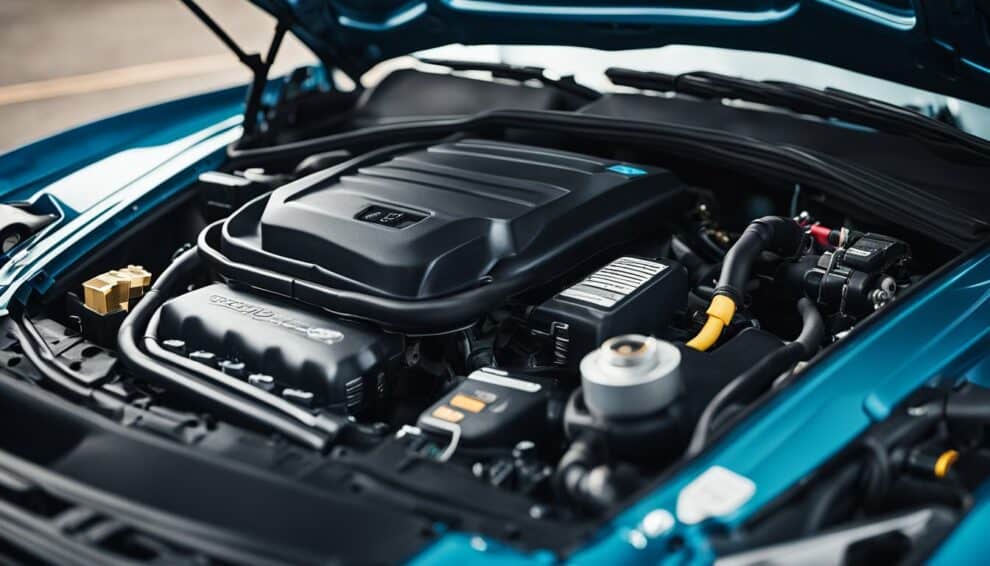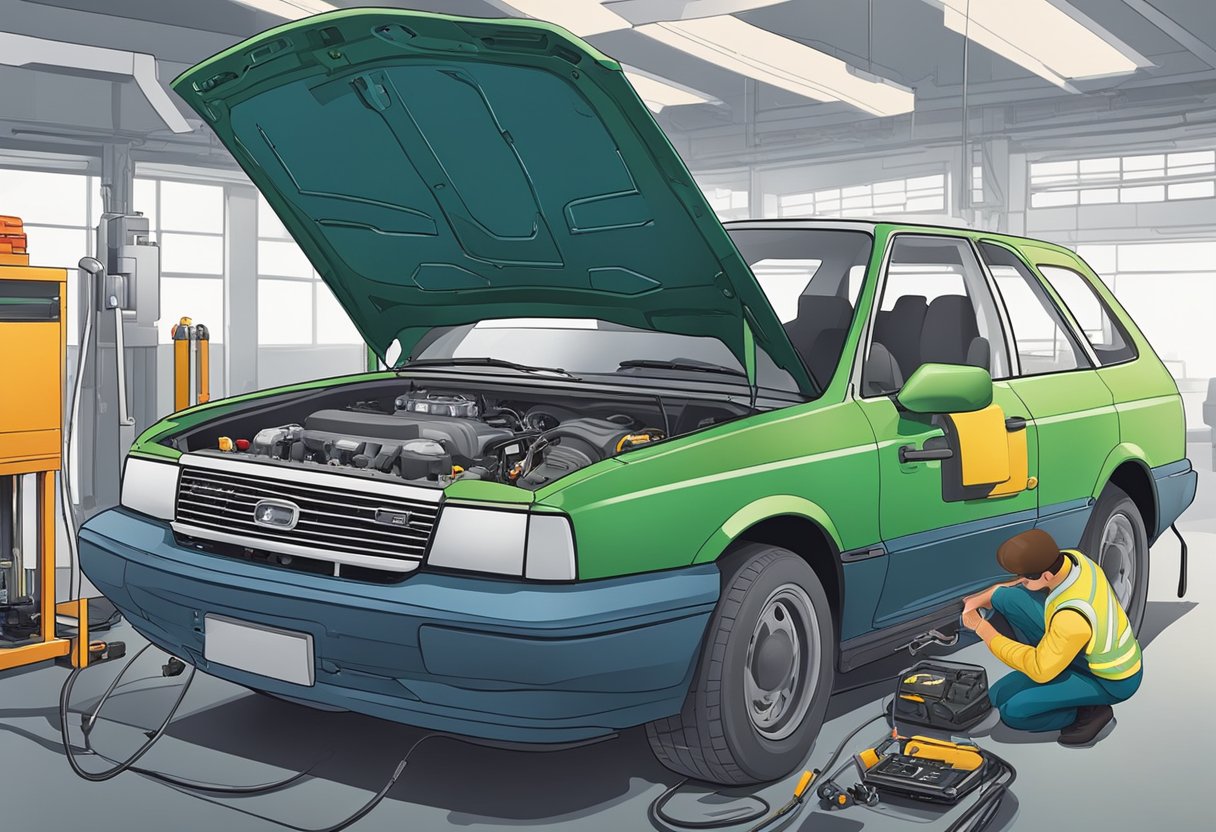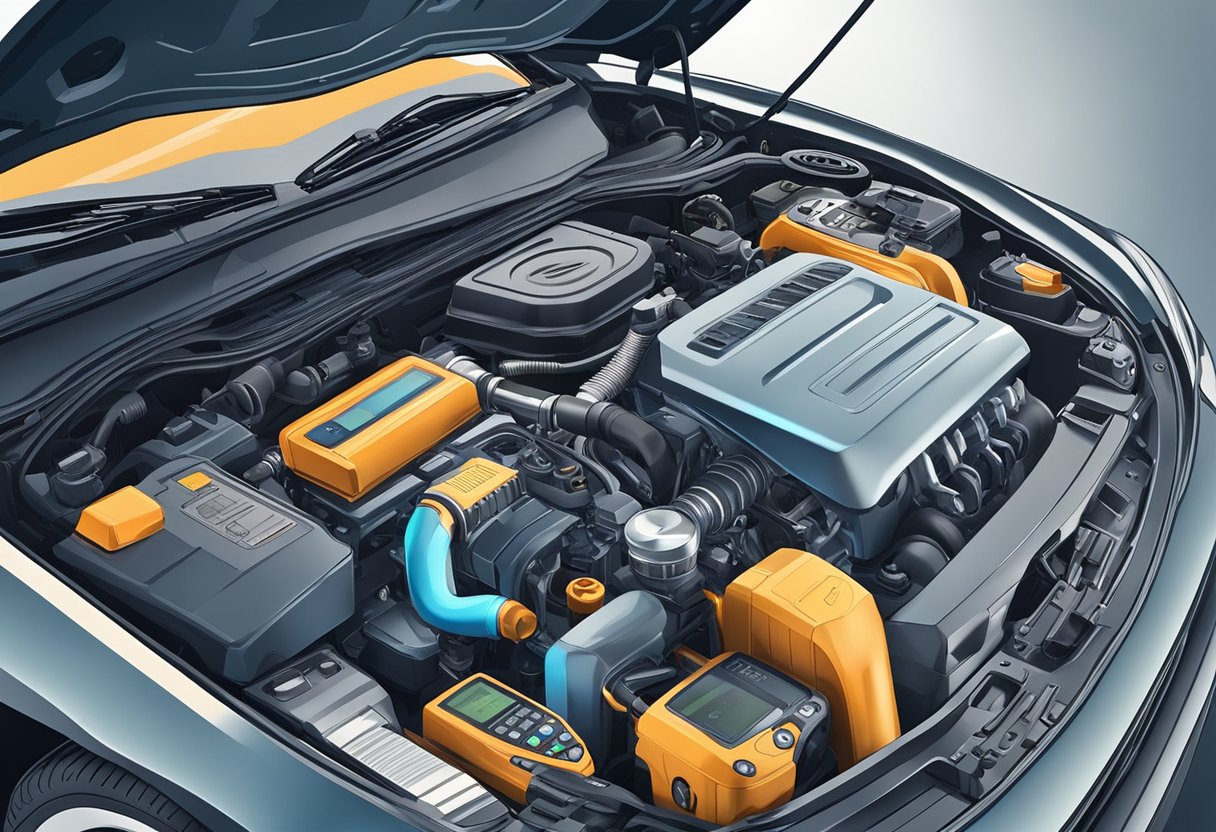If you’re experiencing issues with your vehicle’s O2 sensor, you may have encountered error code P0130.
This code refers to a malfunction in the O2 sensor circuit for bank 1 sensor 1.
While this issue can be frustrating to deal with, it’s important to understand what’s causing the problem and how to fix it.
The O2 sensor plays a critical role in your vehicle’s emissions control system, monitoring the amount of oxygen in the exhaust to determine if the engine is running efficiently.
When the O2 sensor circuit for bank 1 sensor 1 malfunctions, it can cause a range of issues, including decreased fuel efficiency and increased emissions.
Fortunately, diagnosing and fixing this problem is typically straightforward and can be done with a few basic tools and some know-how.
In this article, we’ll explore the common causes of P0130 and walk you through the steps to solve it.
Understanding Error Code P0130
Definition and Significance
Error code P0130 refers to a malfunction in the O2 sensor circuit, specifically for Bank 1 Sensor 1.
This sensor is responsible for monitoring the oxygen levels in the exhaust system and providing feedback to the engine’s control module.
A malfunction in this circuit can lead to poor engine performance, increased emissions, and decreased fuel efficiency.
Causes of O2 Sensor Malfunction
There are several potential causes for an O2 sensor malfunction. These include:
-
Faulty sensor: The sensor itself may be damaged or worn out, leading to inaccurate readings.
-
Wiring issues: Damaged or corroded wiring can interfere with the sensor’s ability to communicate with the engine control module.
-
Exhaust leaks: Leaks in the exhaust system can affect the accuracy of the sensor’s readings.
-
Vacuum leaks: Leaks in the engine’s vacuum system can also interfere with the sensor’s ability to function properly.
-
Faulty engine control module: In rare cases, the engine control module itself may be faulty and not properly receiving or interpreting the sensor’s signals.
If you are experiencing error code P0130, it is important to address the issue promptly to avoid further damage to your vehicle and to ensure optimal engine performance.
A qualified mechanic can diagnose the issue and recommend the appropriate course of action, which may include replacing the sensor, repairing wiring, or addressing other underlying issues.
Diagnostic Procedures
Tools and Equipment Needed
Before you begin diagnosing the P0130 error code, you will need the following tools and equipment:
- OBD-II scanner
- Digital multimeter
- Oxygen sensor socket
- Wire strippers and crimpers
- Heat shrink tubing and a heat gun
- Electrical tape
- Safety glasses and gloves
Step-by-Step Diagnostic Guide
Follow these steps to diagnose and fix the P0130 error code:
-
Connect the OBD-II scanner to your vehicle’s diagnostic port and retrieve the error code.
The P0130 code indicates a malfunction in the oxygen sensor circuit for bank 1, sensor 1.
-
Inspect the wiring and connections for the oxygen sensor. Look for any signs of damage, corrosion, or loose connections.
Repair or replace any damaged wiring or connections.
-
Use the digital multimeter to test the oxygen sensor’s voltage signal.
With the engine running, the voltage should fluctuate between 0.1 and 0.9 volts.
If the voltage is steady or outside of this range, the oxygen sensor may need to be replaced.
-
Use the oxygen sensor socket to remove the sensor from the exhaust system. Inspect the sensor for any signs of damage or contamination.
Replace the sensor if necessary.
-
Install the new oxygen sensor and tighten it to the manufacturer’s specifications.
Use heat shrink tubing and a heat gun to protect the wiring connections, and secure them with electrical tape.
-
Clear the error codes with the OBD-II scanner and test drive the vehicle to ensure the error code does not return.
By following these diagnostic procedures, you can solve the P0130 error code and ensure your vehicle is running smoothly.
Troubleshooting Strategies
If you are experiencing an error code P0130, there are several troubleshooting strategies that you can try before resorting to more advanced techniques.
Common Fixes
The first thing you should do is check the wiring and connections to the O2 sensor.
Make sure that there are no loose or damaged wires, and that the connections are clean and secure.
If you find any issues, repair or replace the affected parts as necessary.
Another common fix for this error code is to replace the O2 sensor itself.
This is a relatively simple procedure that can often be done at home with basic tools.
However, before replacing the sensor, make sure that it is indeed faulty by testing it with an OBD-II scanner.
Advanced Troubleshooting Techniques
If the common fixes do not solve the issue, there are several advanced troubleshooting techniques that you can try.
One of these is to perform a voltage test on the O2 sensor circuit.
This will help you determine whether the issue is with the sensor itself or with the wiring and connections.
Another advanced technique is to perform a continuity test on the wiring between the O2 sensor and the engine control module (ECM).
This will help you identify any breaks or shorts in the circuit that may be causing the error code.
If you are still unable to solve the issue after trying these techniques, it may be necessary to take your vehicle to a professional mechanic or dealership for further diagnosis and repair.
Repair and Replacement
When to Replace the O2 Sensor
If you’re experiencing a P0130 error code, it’s likely that your O2 sensor has failed.
However, before replacing the sensor, it’s important to make sure that the problem is not caused by other issues such as damaged wiring or a blown fuse.
You can use a multimeter to test the voltage and resistance of the sensor and its wiring to determine if they are functioning properly.
If you find that the sensor is indeed faulty, it’s time to replace it.
Installation Guide for New Sensor
Replacing the O2 sensor is a relatively simple process that can be done at home with the right tools.
Here’s a step-by-step guide to help you through the process:
- Locate the faulty O2 sensor. This will be the sensor labeled “Bank 1 Sensor 1” on your vehicle.
- Disconnect the electrical connector from the sensor.
- Use a wrench or socket to remove the sensor from the exhaust system.
Be careful not to damage the threads or the surrounding components.
- Install the new sensor by threading it into place. Make sure that it is tightened securely but not over-tightened.
- Reconnect the electrical connector to the new sensor.
- Clear the error code using a code reader or scanner. This will ensure that the check engine light does not come back on.
It’s important to note that different vehicles may have slightly different installation procedures.
Always consult your vehicle’s owner’s manual or a trusted mechanic for specific instructions.
Preventative Measures and Maintenance Tips
To prevent error code P0130 from occurring, it is important to maintain your vehicle’s O2 sensor.
Here are some maintenance tips to follow:
- Regularly check and replace your O2 sensor. Most manufacturers recommend replacing the sensor every 60,000 to 100,000 miles.
- Keep your engine properly tuned. A poorly tuned engine can cause the O2 sensor to fail prematurely.
- Avoid using fuel additives that can damage the O2 sensor. Use only high-quality fuel and avoid adding any unnecessary additives.
- Check for any exhaust leaks. Leaks can cause the O2 sensor to fail and can also lead to other engine problems.
- Avoid driving in extreme conditions.
Extreme temperatures, high altitudes, and heavy loads can all cause the O2 sensor to malfunction.
By following these preventative measures and maintenance tips, you can help ensure that your O2 sensor stays in good working condition and avoid the hassle of dealing with error code P0130.
As an Amazon Associate we earn from qualifying purchases.















